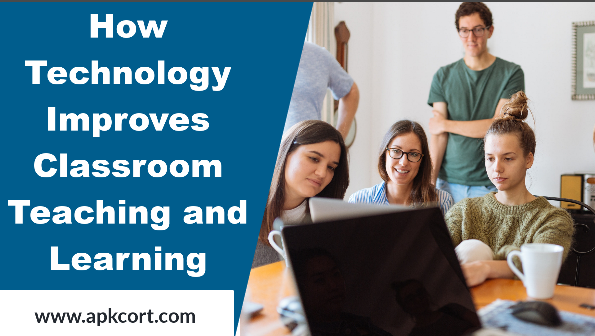if you are looking for the role of Technology in Classroom Teaching and Learning then it will be a good place to understand the role of technology in classroom teaching and learning. As we know there is great importance of classroom teaching and learning.

Classroom Technology Improves Learning Outcomes
Students who use digital content and other classroom technologies outperform those who don’t. Research shows that:
Virtual Reality in the Classroom
In the classroom, it can be used to bring historical events to life, transport students to new places, or simulate real-life situations. It can also be used for online collaboration and communication. Students can also use VR to enhance their creativity and problem-solving skills. VR can be used in many subject areas, such as VR may also be integrated with other technologies, such as robotics and artificial intelligence, to expand its potential.
Digital Textbooks
Digital textbooks are online versions of print books. They typically include interactive elements so students can explore concepts in greater depth, receive real-time feedback, and take quizzes that assess their understanding. Digital textbooks are beneficial for students with disabilities, as well as for students who learn better online than in print or with paper textbooks. They are also useful for increasing students’ retention of course content.
Collaboration Platforms and Discussions
Many online courses use collaboration platforms to enable students to work together on projects, exchange feedback on each other’s work, and receive guidance from their instructors. These platforms provide the benefits of face-to-face learning while maintaining the advantages of online education.
Online Language Learning
Virtual environments like avatars and virtual worlds give students an immersive opportunity to practice speaking a foreign language. They can also express themselves using visual and audio tools. Technology can combine with other factors to help students learn vocabulary and grammar. For example, someone can play a recording of a native-speaking instructor pronouncing new words. Or, a voice recognition app can transcribe what a student says, then provide feedback on pronunciation and grammar.
STEM with Technology
Technology has an important role in STEM subjects, as it can help students explore these topics in new ways. Technology can help students learn about STEM subjects in a variety of ways, such as Students can also use technology to create their own projects, such as creating a website about a scientific discovery or developing a robot. Technology can help them with the design and development of these projects.
Collaboration Platforms and Discussions
Online collaboration tools are available for students to team up on projects, share ideas, and discuss concepts with peers. Some of these platforms also include discussion boards that allow students to respond to one another’s ideas, pose questions, and explore topics in greater depth. While these tools can be helpful, they may not replace in-person collaboration and discussion. In fact, studies have shown that face-to-face collaboration is one of the most important factors in academic success.
Virtual Reality in the Classroom
VR provides a highly immersive and visual learning experience, allowing students to explore new places and topics in ways that aren’t possible in the physical world. Certain VR platforms have been designed for the classroom, providing teachers with tools to guide students through the experience and prompt them to explore and discuss the content. VR can be used to explore a variety of subjects, including the environment and ecosystems, astronomy, social issues, cultural diversity, and historical events and people.
Tech Tools for Research and Practice
Students can use technology to explore content, and collect resources from peers and experts. Students can use social networks to share ideas, ask questions and collaborate on projects. Students can use online platforms to organize and present their work and findings, including links to relevant websites and publications. Some online platforms allow students to create online courses with content and assessments. These tools can encourage long-term skill development, including research projects and internship opportunities.
Smart Boards in the Classroom
A smart board is a digital whiteboard that enables teachers to create visual content and connect it to different kinds of media, including audio, video, and collaborative documents. Some are also touchscreens that enable students to mark up content and provide an intuitive interface for data visualization. Smart boards also enable teachers to create polls and quizzes. They provide time-tracking tools for students’ projects. Further, they help in interactive presentations .
Conclusion
Technology can help students learn in new ways and achieve better outcomes. It can also help teachers better manage their workloads so they can focus on what matters most: classroom instruction. With the right technology, teachers can provide students with personalized learning experiences that meet their needs, support their interests, and promote their growth. So we can see the role of technology in Classroom Teaching and Learning.





